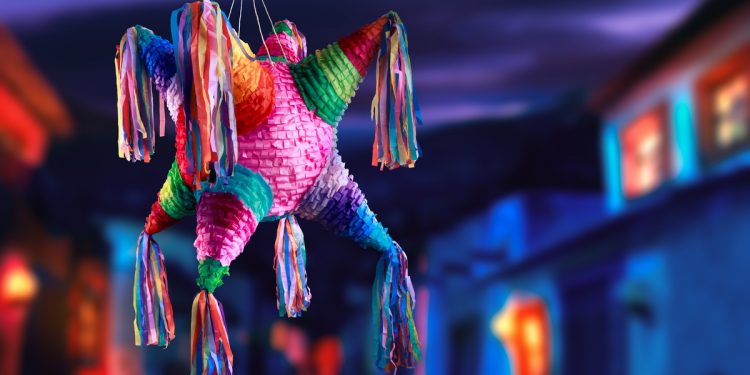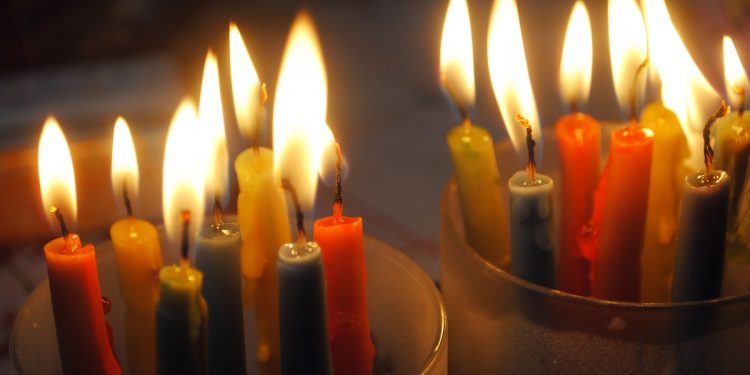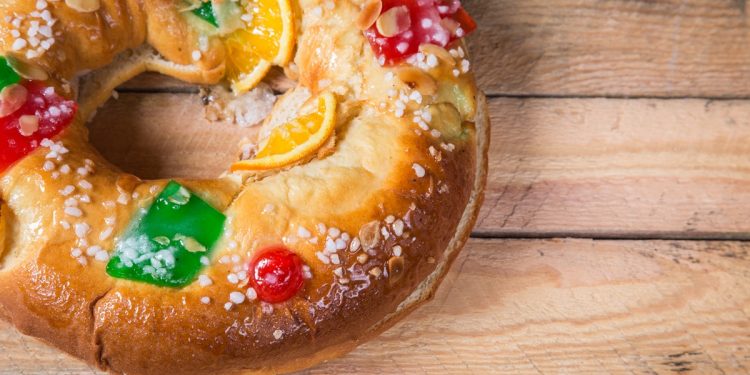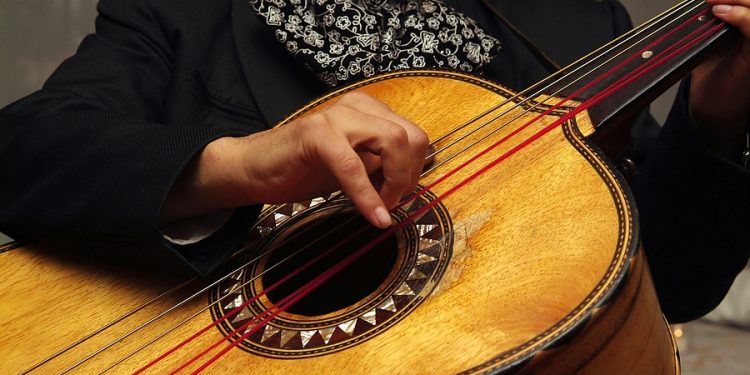The highlight of many a Mexican festive occasion —a birthday celebration, Christmas party, or Posada— is the breaking of the piñata.
The Mexican piñata party ritual
For the uninitiated, the piñata is a decorated clay pot or papier-mâché container filled with treats (more about those later) which is strung from a rope and flailed at in turns by party-goers who are blindfolded and armed with a stick.
A person at one end of the rope —or sometimes a person at each end— will be able to swing the piñata in an attempt to keep it away from its assailant, and make the game last as long as possible.
When the piñata breaks, the contents are scattered on the ground and a rush is made to collect as much loot as possible.
At most children’s birthday parties and Christmas posadas the order in which the participants get a shot is based on age, from youngest to eldest. This is logical since the bigger the person, the more likely they are to break the piñata, and the idea is to keep it going for a good while—at least long enough to ensure that every child has a turn.
Stick flailed to the piñata song
The duration of a “turn” is as long as it takes to sing the piñata song, which goes like this:
Dale dale dale, no pierdas el tino,
Porque si lo pierdes, pierdes el camino.
Ya le diste uno,
Ya le diste dos,
Ya le diste tres y tu tiempo se acabó.
Which loosely translates as:
Hit-it hit-it hit-it, don’t lose your aim,
Because if you lose it, you will lose your way.
Now you’ve hit it once,
Now you’ve hit it twice,
Now you’ve hit it three times,
And your time is up.
Essential preparations for your piñata ritual
More thought and decision-making goes into a simple piñata ritual than you might expect:
First of all, what should go inside the piñata?
Christmas piñatas tend to be healthier than birthday piñatas. They usually contain pieces of sugar cane, tangerines, or little oranges called naranjas piñateras, peanuts, a Mexican fruit called tejocote, limas (a sort of cross between an orange and a lime) and a variety of candy: boiled sweets, chocolate coins, and such. Birthday piñatas tend to have more candy and less fruit. Some piñatas may also contain small toys and other trinkets.
Next, where to stretch the rope on which the piñata will be strung?
This often involves at least one person, usually an adult, leaning precariously out of an upstairs window, on a rooftop terrace, or hanging-off the side of one of those spiral iron staircases common in Mexico as a way up onto the roof.
Finding the right stick to strike the piñata
A traditional wooden broom handle is the best, and if you visit your local ferreteria you should be able to buy one.
The new-style hollow plastic or thin hollow metal tube handles are too light to make any impression on the piñata, especially the more common papier-mâché ones which are quite resistant. A baseball bat is too heavy for the smaller swingers and gives an unfair advantage to the bigger children or adults.
Piñata shops actually sell sticks that are about the right size and weight, which is fine in today’s world of ready-made. If the stick doesn’t break during the ritual, it can be stored ready for the next party.
Add a blindfold and the piñata ritual can begin
Once the piñata is all set up, and someone finds an adequate scarf or bandanna to use as a blindfold, the fun is ready to begin. (The little children are not blindfolded, by the way.)
Unwritten rules and strategies
If the piñata is one of the spherical ones with paper cones stuck on it, a common strategy frequently used by players is to knock-off one or more of the cones without breaking the piñata.
There’s a sort of unwritten rule that if you break one of those off, that ends your turn, but you get to keep the cone, which is useful for filling with goodies once the piñata is broken.
If the piñata is thematic —Disney characters seem perennially popular— an arm or a leg or any other non-core piece of the piñata could be broken-off and kept for the same purpose.
Time outs, the break, and the final rush for the bounty
With clay-pot piñatas, one good crack can break them open and the contents would spill on the floor. With the more common and most popular papier-mâché variety, often the piñata will split rather than break, and just a few things fall out, prompting some of the children to rush-in to grab them while the person with the stick may still be in full-swing: if blind-folded, they might not realize the piñata has been split.
This calls for a time-out while the stray pieces of fruit or candy are retrieved. If the split or tear in the piñata is big enough, the person in charge of the rope will usually shake it up and down so that more fall out.
Then one of the adults will take it upon him or herself to declare the piñata broken, step into the arena, grab the damaged artifact and shake it until all the contents are emptied onto the ground.
This signal is a cue for the scrum, as children rush-in armed with their cones and other piñata parts, or at least one of those ubiquitous plastic bags, to fill.
After the adrenaline fest, adults with brooms appear to sweep up the remains of tissue paper, papier-mâché, and the odd broken fruit no one claimed; and some redress is made in benefit of the less aggressive of the participants whose share of the loot doesn’t come anywhere near to what even the least social-minded might consider fair.
Mexico in your inbox
Our free newsletter about Mexico brings you a monthly round-up of recently published stories and opportunities, as well as gems from our archives.







